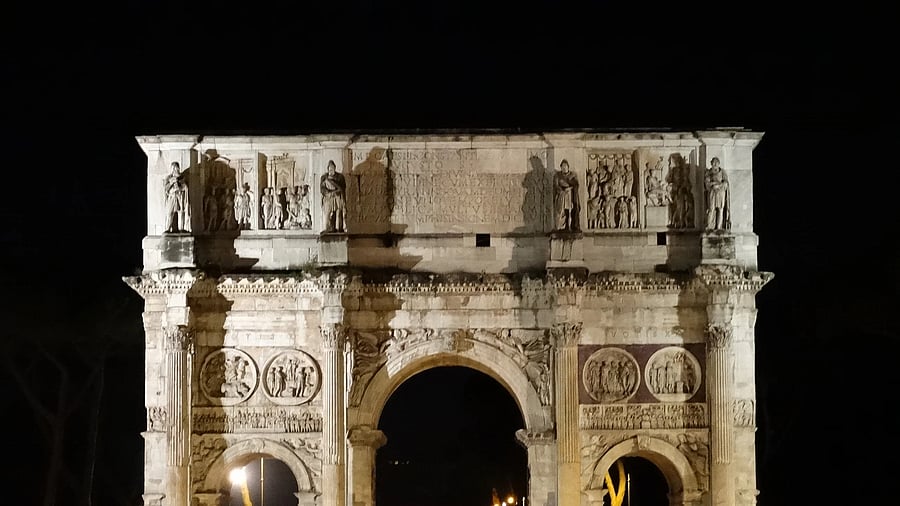
The Arch of Constantine is a triumphal arch in Rome dedicated to Emperor Constantine the Great.
Credit: Vissa Venkata Sundar
=
They say Rome wasn’t built in a day — but in just one Roman night, I fell in love forever. A whirlwind romance that left me with a heart full of wonder and sore feet.
I had long been drawn to Italy — a quiet, unspoken longing — but twice I almost let life’s chaos pull me away. But some cities call to you, and sooner or later, you answer. For me, that city was Rome.
Flying in via Doha, my mind was filled with anticipation, a dog-eared guidebook tucked in my bag and a journal full of dreams. Even my introverted nature cracked at 30,000 feet, as I swapped travel tips with the crew, soaking up every whisper of Roman magic. I’d planned little, hoping to let the city’s ancient energy guide me.
Touching down at Fiumicino Airport on a warm, breezy afternoon, I caught my first glimpse of Rome through the window of a shuttle to Roma Termini. The city unfurled like a living painting: Vespas zipping through golden light, terracotta buildings lined with bougainvillea, and modern blocks basking in the sun. Above it all, Rome herself rose — eternal and luminous, an invitation to step back in time.
I dropped my bags at the hotel, barely catching my breath, and stepped back into the night. That’s when the true magic of Rome began to unfold.
By day, the city dazzles, but by night, it transforms into something far more seductive. I wandered down cobblestone streets, my camera clicking in awe as moonlight glinted off ancient stones.
My first stop was Il Colosseo. Standing there, bathed in amber light, it felt like the ghosts of gladiators still whispered in the air. The nearby Arch of Constantine flickered under the soft glow, its ancient carvings still telling stories from another era. “Inspiring the divine,” the inscription read — and it felt like the city’s own mantra.
A few steps further, the Roman Forum revealed itself — a majestic ruin suspended between the past and present. Once the heartbeat of the empire, now it stood in dignified silence, a testament to the grandeur that once was.
Next, the Fontana di Trevi shimmered under the moonlight, its waters sparkling like a jewel. Tourists tossed coins, wishing for their own slice of Roman fortune. I couldn’t help but marvel at the artistry — a perfect blend of marble and mythology. I found myself asking, “Is this even possible?”
It’s in these quiet moments — a midnight sandwich of grilled eggplant and mozzarella, a walk through alleys humming with life — that Rome’s true charm reveals itself. Cats nap lazily on marble steps, fountains overflow with timeless grace, and history is woven into the very fabric of the streets. For the curious traveller, even a short visit allows Rome to reveal her heart.
The next morning, sore-footed but spellbound, I set off to explore more of Rome’s treasures. The Pantheon greeted me with its perfect, unyielding dome, timeless and utterly unbothered by the passage of centuries.
At Piazza Venezia, the Altare della Patria gleamed in pristine white, a powerful contrast to Rome’s ancient ruins. Proud and imposing, it’s Rome’s tribute to its modern identity, and a striking counterpoint to the city’s layered history.
Rome is a beautiful mess by day: noisy, chaotic, and brimming with life, like a Fellini film set in rush hour. But at night? She steps into Oscar mode. Every piazza, every ruin, every alley transforms into a grand spectacle, perfectly lit, ready to star in its own drama.
Rome doesn’t simply preserve its past; it parades it. “History is written in the stones,” someone once told me. And the stones? They seem to love the attention.
On my final night, with my body tired and my heart full, I knew one thing: I’d return. Because in Rome, the drama of the past never fades. It lives on under the eternal spotlight, scene after scene.